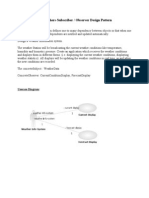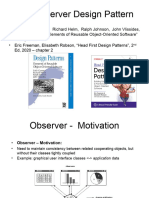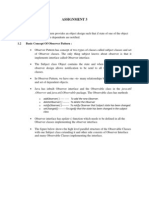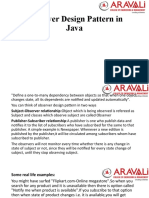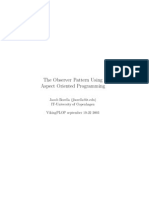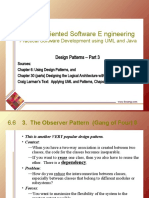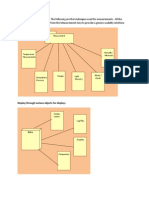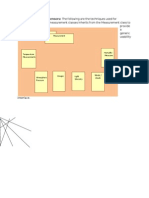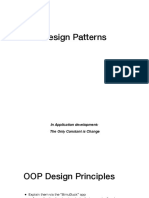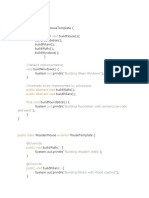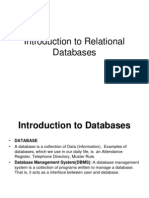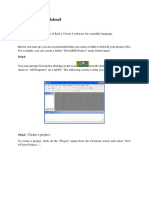0% found this document useful (0 votes)
136 views15 pagesJava Built-In Observer Pattern
The document discusses how to implement the Observer pattern using Java's built-in Observer/Observable classes. Key points:
1) The concrete Subject (WeatherData) extends Observable instead of implementing an interface. It calls setChanged() and notifyObservers() to update observers.
2) Observers implement the Observer interface and override the update(Observable, Object) method.
3) The Observable is passed to the observer constructor rather than the concrete Subject directly. Observers cast the Observable to the concrete Subject to access updated data.
Uploaded by
Noora SweisCopyright
© © All Rights Reserved
We take content rights seriously. If you suspect this is your content, claim it here.
Available Formats
Download as PDF, TXT or read online on Scribd
0% found this document useful (0 votes)
136 views15 pagesJava Built-In Observer Pattern
The document discusses how to implement the Observer pattern using Java's built-in Observer/Observable classes. Key points:
1) The concrete Subject (WeatherData) extends Observable instead of implementing an interface. It calls setChanged() and notifyObservers() to update observers.
2) Observers implement the Observer interface and override the update(Observable, Object) method.
3) The Observable is passed to the observer constructor rather than the concrete Subject directly. Observers cast the Observable to the concrete Subject to access updated data.
Uploaded by
Noora SweisCopyright
© © All Rights Reserved
We take content rights seriously. If you suspect this is your content, claim it here.
Available Formats
Download as PDF, TXT or read online on Scribd
/ 15









